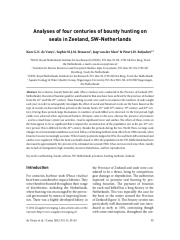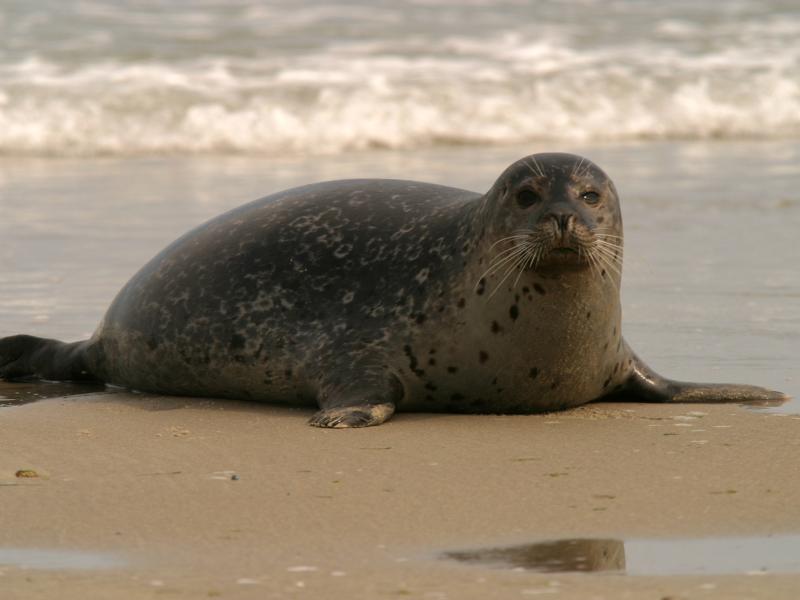Lutra 55(1)_de Vooys et al_2012

Analyses of four centuries of bounty hunting on seals in Zeeland, SW-Netherlands
For centuries, bounty hunts for seals (Phoca vitulina) were conducted in the Province of Zeeland (SWNetherlands). Records of bounties paid for seals hunted in that area have been archived by the province of Zeeland from the 16th until the 20th century. These hunting records were used to reconstruct the numbers of seals caught each year in order to subsequently investigate the effect of social and historical events on the hunt. Based on the type of records we discerned three periods in the bounty hunts: 16th until 19th century, 19th century, and 20th century. During these periods large fluctuations in numbers of seals killed were observed. In the first period, high yields were achieved when experienced hunters (Frisians) came to the area, whereas the presence of privateers - and to a much lesser extent war activities - lead to significant lower seal catches. The effects of these events on the hunt appear to be so significant that it impairs the reconstruction of the population size in the pre-20th century period. This is different for the 20th century. Besides the periods during the two World Wars, no large scale changes in environmental conditions occurred. Efficacy of hunting methods took effect from 1900 onwards, when firearms became increasingly accurate. When bounty payments stopped in1934, the seal hunt still continued and catches were registered. When the hunt was finally closed in 1961, the population in the SW-Netherlands had been decreased to approximately five percent of its estimated size around 1900. It has not recovered since then, mainly due to lack of immigration, high mortality, excessive disturbance, and low reproduction.
